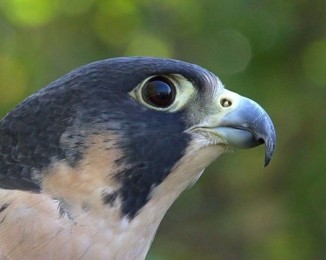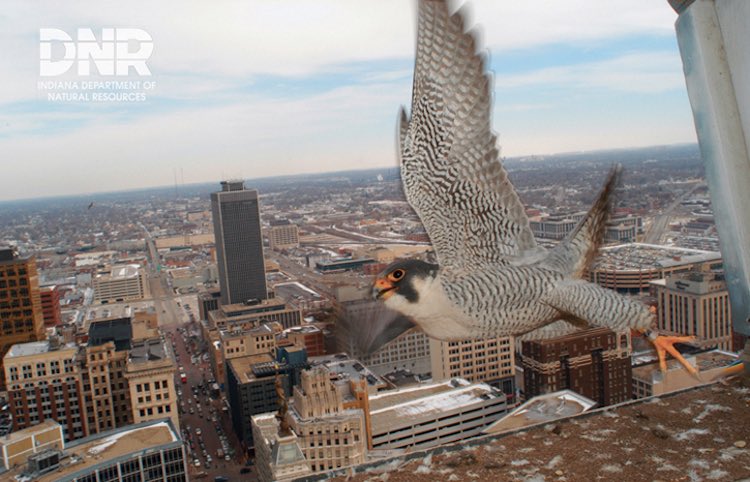After nearly becoming extinct across North America due to humans’ widespread pesticide use, one species–the fastest on earth–is making a comeback, thanks to human intervention and the tall skyscrapers of our modern landscapes.
While the peregrine falcon can reach speeds over 200 miles per hour in pursuit of prey, the majestic birds couldn’t outrun the man-made hazards of the mid-twentieth century. It wasn’t until the government ban on DDT and protections extended by the new Endangered Species Act in the 1970s, that these birds of prey had a chance of survival.
 Peregrines were finally removed from the U.S. endangered species list in 1999, but some states, like Illinois, kept it listed, because the once-native population had fallen to zero.
Peregrines were finally removed from the U.S. endangered species list in 1999, but some states, like Illinois, kept it listed, because the once-native population had fallen to zero.
Ironically, it was the majestic skyscrapers in America’s third largest city, Chicago, that gave the falcons the perfect hunting perch from which to look for pigeons–and the perfect launching pad from which to soar off the endangered species list in Illinois, just this month.
Captive breeding programs have been releasing juvenile falcons back into the wild for years. Some of the animals preferred to stay in the traditional habitat of quiet cliffs near water or field, but many chose the bright lights and big city with its tall building ledges.
When the falcons first began showing up in this city along the Great Lake of Lake Michigan, volunteers began placing nesting platforms atop bridges and other perches to help them thrive.
Dame Saves Orphaned Elephants for 50 Years With Own Milk Recipe
Conservationists in other big cities, especially those located on water, like London, have celebrated the urban success of peregrines.
In mid-1970s there were only 375 nesting pairs of the blue-grey falcons in North America, but today the number of peregrines, a species that mates for life, is up to 1,650 couples in the U.S. and Canada.
(READ more at the Wall Street Journal) Photos by (top) Indiana Dept of Natural Resources; Greg Hume, CC




















